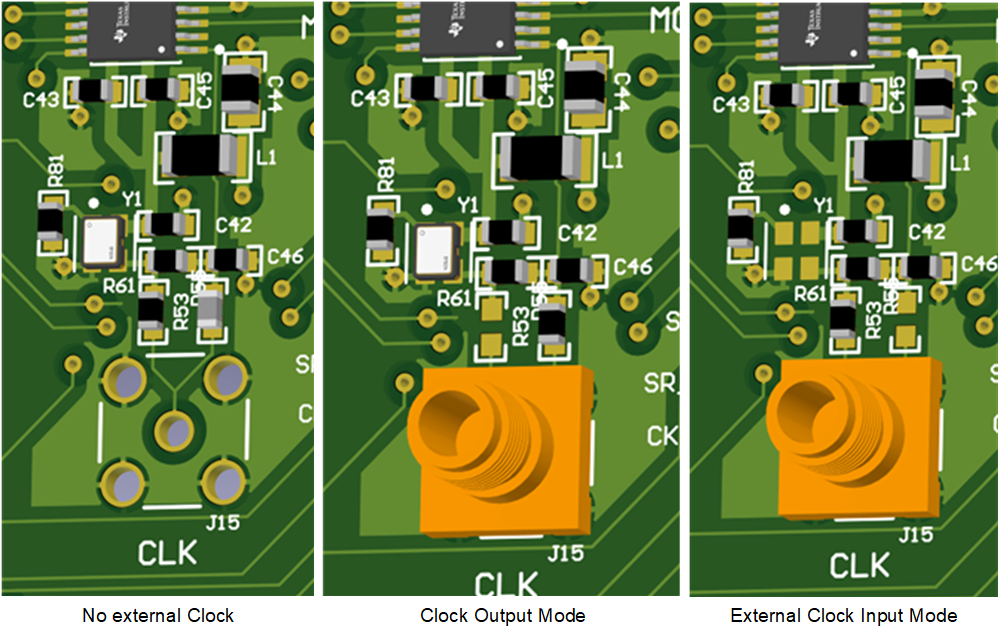JAJU878 November 2022 ADS117L11 , ADS127L11 , ADS127L14 , ADS127L18
- 概要
- リソース
- 特長
- アプリケーション
- 5
- 1System Description
- 2System Overview
- 3System Design Theory
- 4Hardware, Software, Testing, and Test Results
- 5Design and Documentation Support
- 6About the Author
4.1.2.5.4 Clocking Modes
The board supports 3 clocking modes as illustrated in Figure 4-6:
- Stand-alone mode: there is no clock line connection to other boards
- Clock output mode: the onboard clock is connected to the SMA connector
- External clock input mode: there is no onboard clock, the external clock is connected to the SMA connector
Table 4-2 details the board configuration with a minor assembly variant in the clocking section.
Table 4-2 Board Clocking
Configurations
| NO EXTERNAL CLOCK CONNECTIVITY | CLOCK OUTPUT MODE | EXTERNAL CLOCK INPUT MODE |
|---|---|---|
| J15 removed | R53 removed | Y1 removed, R55 removed |
 Figure 4-6 Clocking Assembly
Variants
Figure 4-6 Clocking Assembly
VariantsIf synchronizing two boards, configure the first board in clock output mode, and configure the second board in external clock input mode. A short coaxial cable connects J15 on both boards, and both boards can be connected to the same controller. Use the controller to handle the difference in nRDY signal.